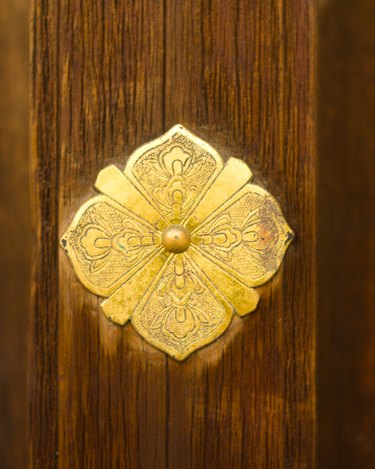Things You'll Need
Artist's transfer paper
Chalk pencil
Pencil
Pattern
Chalk
Wood
Stylus
Sponge
Wax paper

Transferring patterns onto wood is a skill frequently used by decorative painters, wood carvers and craft hobbyists. There are several fast, easy and inexpensive ways to transfer patterns onto wood. Try several methods, then choose your favorite to use again on your next project.
Retracing the Back of the Pattern
Step 1
Place the pattern face down on the table. Retrace the lines on the back of the pattern using a chalk pencil.
Video of the Day
Step 2
Turn the pattern over so the chalk side is down. Position the pattern on the wood.
Step 3
Retrace the lines of the pattern using the stylus with very little pressure to avoid creating grooves in the surface of the wood. Remove the pattern.
Rubbing the Back of the Pattern
Step 1
Place the pattern face down on the table. Hold the chalk or pencil horizontally; rub it on the back of the pattern.
Step 2
Wipe off any excess graphite dust or chalk gently. Position the pattern with the graphite or chalk side down on the wood.
Step 3
Retrace the pattern lines with the stylus using light pressure. Remove the pattern.
Using Transfer Paper
Step 1
Place a piece of artist's transfer paper with the treated side down between the pattern and the wood.
Step 2
Trace the lines of the pattern using a stylus by applying light pressure.
Step 3
Remove the pattern and the transfer paper.
Tip
If you are not satisfied with the transfer, dampen a sponge; wipe off the transferred pattern. Allow the wood to dry completely before trying again. Lay a piece of wax paper on top of the pattern before retracing the lines on the wood. This will help prevent you from losing your place during the trans and forgetting to trace part of the pattern or tracing over the same area twice.
Video of the Day